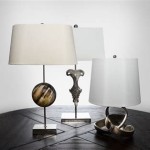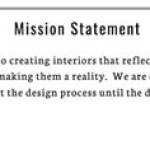Texture in Interior Design: A Guide to Enhancing Depth and Visual Interest
Texture is a fundamental element in interior design that adds depth, visual interest, and character to a space. By incorporating various textures into your design, you can create a dynamic and inviting environment that stimulates the senses and enhances the overall aesthetic experience.
Understanding Texture Types
Textures can be broadly classified into two main categories:
- Visual texture: This type of texture can be perceived through sight alone. It refers to the appearance of a surface, such as its pattern, color, or grain.
- Tactile texture: This type of texture can be experienced through touch. It refers to the physical feel of a surface, such as its softness, roughness, or smoothness.
Incorporating Texture into Design
There are numerous ways to incorporate texture into your interior design. Here are a few ideas:
- Fabrics: Use fabrics with different textures, such as velvet, linen, silk, or wool, for upholstery, curtains, and throw pillows.
- Wall coverings: Choose wall coverings with textured surfaces, such as grasscloth, wallpaper with raised patterns, or exposed brick.
- Flooring: Opt for flooring materials with varied textures, such as hardwood with a distressed finish, carpeting with a plush pile, or tile with an embossed design.
- Furniture: Select furniture pieces with textured surfaces, such as leather sofas with quilted stitching, wooden tables with carved details, or metal chairs with an antiqued finish.
- Accessories: Incorporate decorative accessories with different textures, such as woven baskets, ceramic vases with raised patterns, or metallic sculptures with embossed designs.
Benefits of Texture in Design
Incorporating texture into your interior design offers several benefits:
- Adds depth and interest: Texture creates visual and tactile interest, making a space feel more dynamic and inviting.
- Highlights focal points: Using contrasting textures can draw attention to specific elements in a room, such as a statement wall or a piece of furniture.
- Enhances comfort: Tactile textures can provide a sense of comfort and warmth, making a space feel more cozy and inviting.
- Creates a sense of luxury: Certain textures, such as velvet or leather, can add a touch of opulence and sophistication to a space.
Creating a Balanced Texture Palette
When incorporating texture into your design, it's important to consider balance. Too much texture can overwhelm a space, while too little can make it feel flat and uninteresting. Aim for a combination of textures that complement each other and create a harmonious整体. overall.
By carefully considering the types, placement, and balance of textures in your interior design, you can create a space that is both visually appealing and tactilely pleasing, enhancing the overall aesthetic experience and creating a truly inviting and engaging environment.

The Complete Guide To Add Textures In Interior Design Alcove Studio

The Complete Guide To Use Textures In Interior Design Foyr

The Influence Of Texture In Interior Design Alma De Luce

The Importance Of Texture In Interior Design Luxe Home Interiors

The Importance Of Textures In Interior Design

The Complete Guide To Use Textures In Interior Design Foyr

The Complete Guide To Mastering Texture In Interior Design Artiss

How To Use Texture Colour The Interior Editor

The Importance Of Using Texture In Interior Design

Textures Add A Little Touch To Your Commercial Design Interiorlogic








